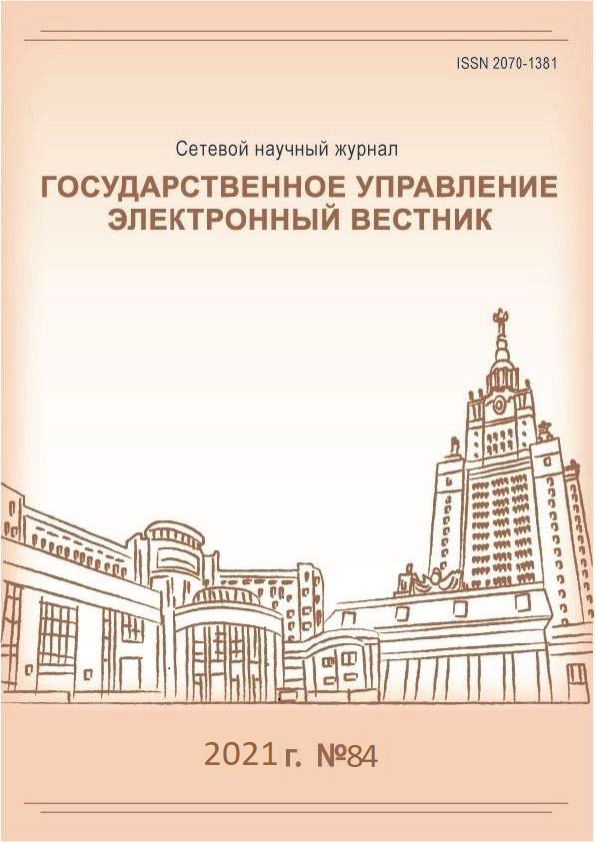Using Artificial Intelligence in Corruption Discernment and Counteraction: International Experience Review
Keywords:
Corruption, artificial intelligence, machine learning, anti-corruption, international experience, anti-corruption methods, trends in the use of artificial intelligenceAbstract
In this article, the authors, using the example of several foreign publications, analyze the trends in the use of artificial intelligence and machine learning in discernment of corruption. Based on the international review, the authors make the conclusion that the mechanisms for detecting corruption, based on the use of artificial intelligence, described in foreign sources, have different potential effectiveness. The most promising application of the presented intelligent systems in the field of combating corruption is using them to detect latent relationships and calculate collusion (cartels) in the public procurement system, electronic auctions organized by companies, and ensure transparency of government procedures (electronic digital services). An analysis of a number of articles on the use of artificial intelligence to create visualized maps based on the number of publications on corruption topics in the media in various territorial entities allowed the authors to conclude that the proposed tool is not sufficiently informative for a comparative assessment of the real level of corruption. The authors draw attention to the fact that a large number of such publications may be due not only to the increased level of corruption in a given territory. It is necessary to take into account the influence of such factors as the growth of the public authorities and civil society anti-corruption activity, the possible bias of some journalists for someone’s political and economic purposes, including direct corruption of journalists for publishing ordered articles, the lack of competence of some media on anticorruption issues, use of false information in publications. These maps rather clearly illustrate both the level of interest of society and the media in the problem of combating corruption, and the intensity of the fight against corruption and the activity of civil control by the media.
References
Попов Е.В., Семячков К.А. Проблемы экономической безопасности цифрового обществав условиях глобализации // региона. 2018. Т. 14. Вып. 4. С. 1088–1101. DOI: 10.17059/2018-4-3.
Adam I., Fazekas M. Are Emerging Technologies Helping Win the Fight against Corruption in Developing Countries? // Pathways for Prosperity Commission Background Paper Series. 2018. No. 21. DOI: http://dx.doi.org/10.13140/RG.2.2.17930.52162.
Berru Y.T., Batista V.F.L., Torres-Carrión P., Jimenez M.G. Artificial Intelligence Techniques to Detect and Prevent Corruption in Procurement: A Systematic Literature Review // Communications in Computer and Information Science. 2020. Vol. 1194. P. 254–268. DOI: https://doi.org/10.1007/978-3-030-42520-3.
Goel R., Nelson M., Naretta M. The Internet as an Indicator of Corruption Awareness // European Journal of Political Economy. 2012. Vol. 28. Is. 1. P. 64–75. DOI: https://doi.org/10.1016/j.ejpoleco.2011.08.003.
Hlatshwayo S., Oeking A., Ghazanshyan M., Corvino D., Shukla A., Leigh L.Y. The Measurement and Macro-Relevance of Corruption: A Big Data Approach // International Monetary Fund Working Papers WP/18/195. 2018. DOI: http://dx.doi.org/10.5089/9781484373095.001.
Lima M., Delen D. Predicting and Explaining Corruption across Countries: A Machine Learning Approach // Government Information Quarterly. 2019. Vol. 37. Is. 1.DOI: https://doi.org/10.1016/j.giq.2019.101407.
Lio M.-Ch., Liu M.-Ch., Ou Y.-P. (2011) Can the Internet Reduce Corruption? A Cross-Country Study Based on Dynamic Panel Data Models // Government Information Quarterly. 2011. Vol. 28. Is. 1. Р. 47–53. DOI: https://doi.org/10.1016/j.giq.2010.01.005.
López-Iturriaga F.J., Sanz I.P. Predicting Public Corruption with Neural Networks: An Analysis of Spanish Provinces // Social Indicators Research. 2018. Vol. 140. No. 3. P. 975–998. DOI: 10.1007/s11205-017-1802-2.
Noerlina R.D., Mursitama T., Fairianti Sh., Kristin D., Sasmoko S., Muqsith A., Krishti N., Makalew B. Development of a Web Based Corruption Case Mapping Using Machine Learning with Artificial Neural Network // 2018 International Conference on Information Management and Technology (ICIMTech). 2018. P. 400–405. DOI: 10.1109/ICIMTECH.2018.8528150.
Ralha C., Silva C.A Multi-Agent Data Mining System for Cartel Detection in Brazilian Government Procurement // Expert Systems with Applications. 2012. Vol. 39. Is. 14. Р. 11642–11656. DOI: https://doi.org/10.1016/j.eswa.2012.04.037.

